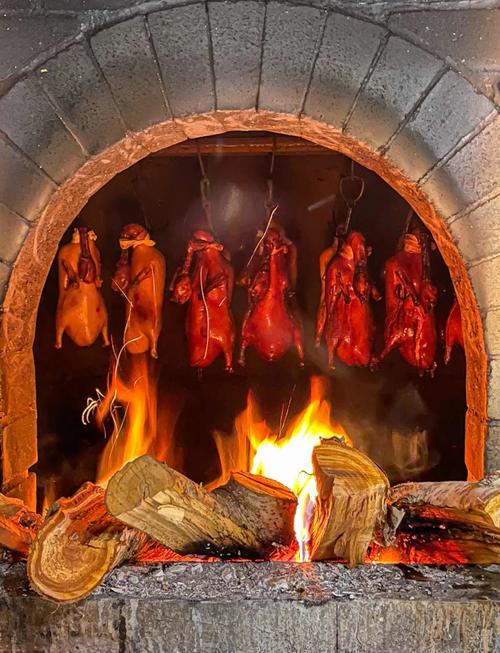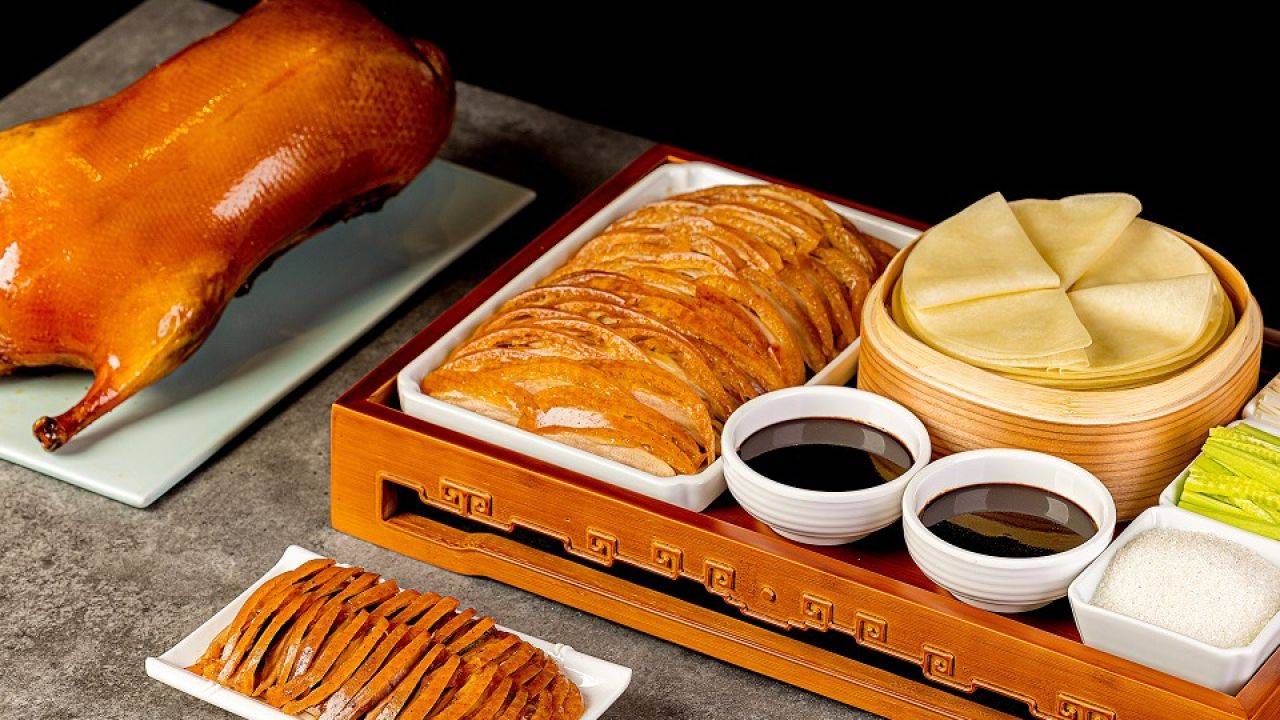Few dishes command as much global reverence as Peking Duck (北京烤鸭). This imperial delicacy, perfected over six centuries, marries crisp mahogany skin with succulent meat in a ritual-like dining experience. Let’s explore why chefs consider it the ultimate test of Chinese culinary mastery.
The Wisdom of Aged Ducks: Flavor That Stands the Test of Time
While most restaurants use 45-day-old ducks, true connoisseurs seek out mature birds (90-120 days old) for deeper flavor:
- Firmer texture that holds up to precise knife work
- Richer fat layers that baste the meat during roasting
- Complex umami developed through longer feeding (traditionally on sorghum and barley)
Historic brands like Quanjude still source ducks from specialized farms in Beijing’s Miyun District, where the birds develop distinctive sweetness from local spring water.
A Royal History: From Imperial Banquets to Global Fame
Yuan Dynasty (1271-1368):
- First recorded in the imperial kitchen manuals of Kublai Khan’s court
- Originally called “Shaoyazi” (roast duck), cooked in closed ovens
Ming Dynasty (1368-1644):
- Became a symbol of prosperity, served at state banquets
- Chefs developed the open-oven technique at Bianyifang (established 1416)
Qing Dynasty (1644-1912):
- Perfected the air-pumping method to separate skin from fat
- Listed among the “Eight Great Culinary Wonders of Beijing“
20th Century:
- Zhou Enlai personally selected Quanjude’s ducks for state banquets
- Recognized as China’s first nationally protected culinary heritage (2008)
The Alchemy of Perfection: A 48-Hour Production
1. Preparation Ritual
- Air Inflation: A bamboo tube blows air between skin and fat (the secret to crispness)
- Scalding & Glazing: Blanched in boiling water, then coated with malt sugar syrup for caramelization
2. The Sacred Roast
Two legendary methods:
A. Gualu (Hanging Oven):
- Uses fruitwood (date, peach, or pear) for fragrant smoke
- Ducks rotate in 270°C heat for 50 minutes
- Results in lighter crispness favored by Da Dong restaurant
B. Menlu (Closed Oven):
- Brick ovens preheated with gaoliang straw
- Cooked by radiant heat for 90 minutes
- Yields darker, richer flavor (Bianyifang’s signature)
3. The 108-Slice Ceremony
Master carvers present the duck in three acts:
- Crisp Skin Diamonds (纯皮) – Eaten with white sugar
- Skin-Meet Moonlight (皮肉相间) – Perfectly balanced slices
- Pure Meat (纯肉) – For wrapping in pancakes
The Art of Consumption: A Multi-Sensory Ritual
Classic Presentation:
- Mongolian Pancakes: Thin as tissue paper, steamed with lotus leaves
- Six Harmonies: Hoisin sauce, scallion curls, cucumber, radish, garlic paste, sugar
- Duck Bone Soup or Salt & Pepper Fried Bones as finale
Modern Innovations:
- Truffle-Infused Hoisin (Jing Yaa Tang)
- Caviar-Topped Skin (Da Dong’s luxury version)
- Duck Fat Mooncakes (Mid-Autumn specials)
Why Peking Duck Endures
Beyond its glorious taste, this dish represents:
🔪 Knife Skills: Each slice must show 0.2mm of fat beneath the skin
🔥 Fire Control: Masters judge doneness by oil droplet sounds
🎨 Edible Art: The plating resembles peony blossoms
Pro Tip: For the ultimate experience, visit Liqun Roast Duck in a 200-year-old courtyard – where third-generation chefs still use Ming Dynasty techniques.
Have you tried authentic Peking Duck? Share your favorite memory in the comments!
Craving more culinary deep dives? Subscribe for our next feature on Hangzhou’s Beggar’s Chicken! 🦆✨

